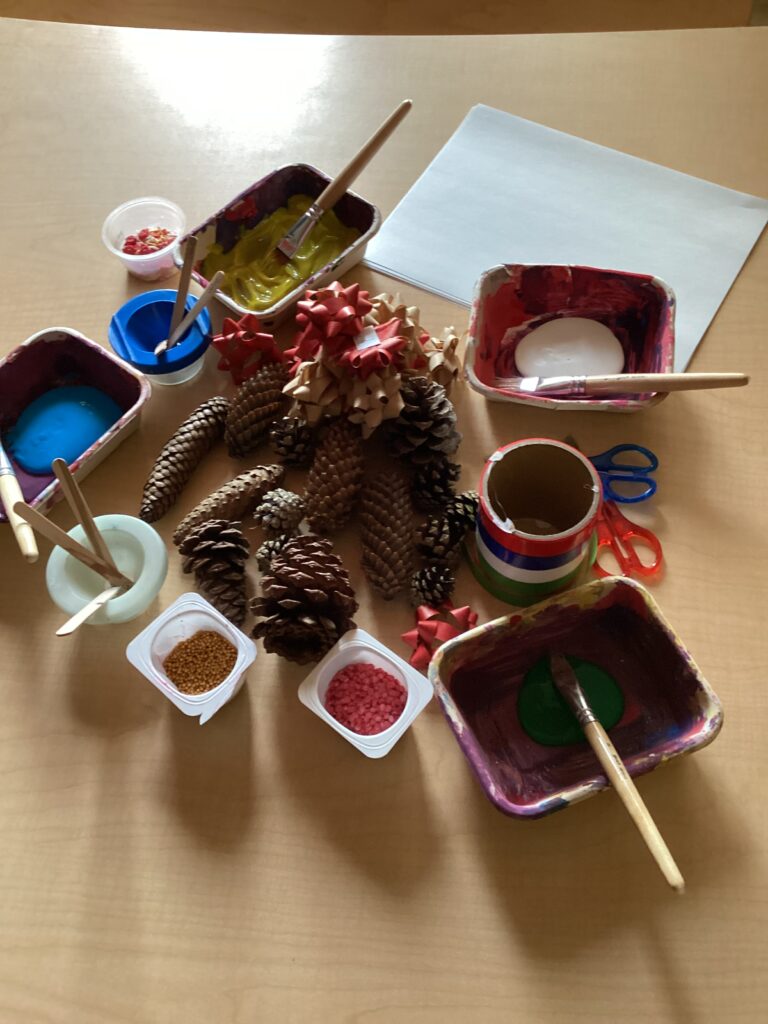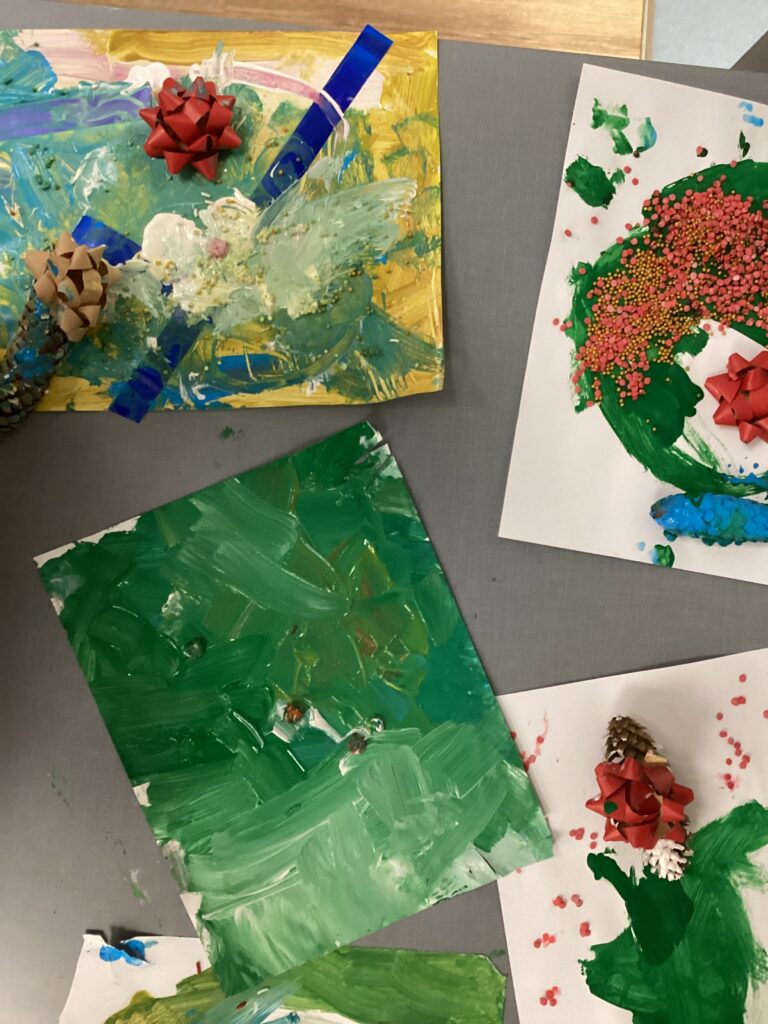One day I thought of giving children some random items for the table time activity. Instead of giving them any guidance I asked them to do whatever they wished. I would like to see how the children use their imagination in an unguided activity. I arranged everything on the table during nap time. “Mol” couldn’t resist her curiosity about what was going to happen. So didn’t sleep during the nap time when she saw of arranging the things on the table. She is the one who first started to do the activity. I asked her to do whatever she wished. She took one of the pinecones and started to paint in it. She also painted the white paper that was kept on the table. She is saying that she has collected many pinecones.

Mol: “This is for my dad.”
She decorated the paper with pinecones and other materials too. Gradually other children also started to wake up and join the activity.
Od: “This is for my mom”
Ril: “I have pinecones at home”
: “They bite me.”
Mol: “Why some are small and some big”
Children explored the pinecones and materials by tracing, drawing, and painting. Through this activity, I can see how the children create connections among them and the materials. They talk to each other, sharing the materials and ideas and creating fun in the activity. I see celebrations of each moment during the activity. Some didn’t touch the cone or paint it. There are also differences in the imagination.


Karolyn’s Notes Apr 8, 2024
Resmi,
It is nice that you offered materials to the children and encouraged them to “do” whatever they wanted to do with them. I wonder what the materials communicated or invited the children to explore. I wonder what evidence you had that they were using their imagination with these materials. What connections do you make to the BC ELF, or other class learning that would help to fully explore this experience with the children. What was your intention as you chose these materials?
“Play is an avenue to these vibrant engagements that is the basis of all learning. As children engage with the world they delve into inquiries, generate new ideas, solve problems, and build theories of people, places and materials. These engagements can be vibrant, exhilarating and noisy, or they can be quiet, focused and solitary. Providing time, space and materials rich with possibilities for experimenting, imagining and transforming allows children to create and explore in diverse ways based on their interests. Creating contexts for each child’s engagement and participation is perhaps the most important way to inspire meaningful learning experiences” (BC ELF, 2019, p. 75).